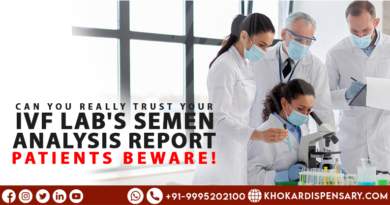Orgasmic Dysfunction in Women
When a woman is sexually excited, she has orgasmic dysfunction if she either can’t get pleasure or has a hard time getting it. When sex isn’t fun, it can become a chore instead of a pleasant way to connect with another person. The drive to have sex may go down, and there may be less of it. This can make the other person angry and cause problems in the relationship.
You will be interested on: Female Infertility Treatment in Hyderabad
Types of Orgasmic Dysfunction
Primary anorgasmia: Primary anorgasmia is the state of never having had an orgasm.
Secondary anorgasmia: Secondary anorgasmia is when you have trouble getting an orgasm, even if you’ve had one before.
Situational anorgasmia: Situational anorgasmia is the type of orgasmic failure that happens most often. It happens when you can only have an orgasm in certain situations, like when you are having oral sex or masturbating.
General anorgasmia: General anorgasmia is not being able to get an orgasm under any circumstances, even when you’re very excited and there’s enough sexual stimulation.
Keep reading: Sexologist in Pretoria
Causes
- Making love that ends too soon, like when the man ejaculates before the woman is ready.
- One or both partners don’t know how their genital parts work. There isn’t enough pre-sex play. There isn’t enough talk about sex, like what kind of stimulation each person likes.
- Problems in the relationship, like unresolved conflicts and a lack of trust; Anxiety about sexual performance; Fear of letting go, being vulnerable, and not being in control (maybe because they are afraid of not being in control of all parts of their life or because they tend to keep their emotions in check).
- A traumatic event that hurts you physically or mentally, like sexual abuse
- Mental illnesses (like stress or sadness)
Orgasmic disease can also be caused by problems with the body. Some of them are nerve damage (caused by diabetes, spinal cord injuries, or multiple sclerosis) and problems with the genital systems.
Also, women over 45 are more likely than younger women to have trouble having an orgasm. This could be because of changes in hormones and the vaginal area that come with menopause.
You will be interested on: Sexologist in Portelizabeth
Symptoms
Orgasmic malfunction is when someone has trouble getting an orgasm or can’t get one at all. Some people think that getting to the climax takes too long or isn’t rewarding enough.
There are a lot of differences in how an orgasm feels and how long it takes to have one. When someone has sexual dysfunction, climax can be hard to reach, take a long time to get to, or not happen at all.
Keep reading: Sexologist in Benoni
Treatment
Doctors may tell women to try self-stimulation to find out what kind of touch is pleasurable and exciting. Relaxation methods and exercises that help you focus on the present may also be helpful. In sensory-focused activities, each person touches the other person in a way that feels good.
There are different ways to treat orgasmic disorders. A doctor may suggest addressing any other health problems or changing any medicines that could be causing sexual health problems. Many times, a person with orgasmic dysfunction will be told by their doctor to go to couples therapy.
You will be interested on: Sexologist in Eastlondon
Summary
The medical term for not being able to get orgasmic is “orgasmic dysfunction“. Some people may have sexual dysfunction if it takes them too long to get to orgasm or if it doesn’t feel good when it does happen.
There are many things that can lead to orgasmic disorder. A person with sexual dysfunction can talk to a doctor about how to fix it.
Related Links :
- Ayurveda Infertility Treatment Clinic in Hebbagodi
- Ayurveda Infertility Treatment Clinic in Jurdab
- Ayurveda Infertility Treatment Clinic in Surat
- Ayurveda Infertility Treatment Clinic in Solapur
- Ayurveda Infertility Treatment Clinic in Shorapur
- Ayurveda Infertility Treatment Clinic in Sur
- Ayurveda Infertility Treatment Clinic in Aminagad
- Ayurveda Infertility Treatment Clinic in Kawalettu
- Ayurveda Infertility Treatment Clinic in Vellore
- Ayurveda Infertility Treatment Clinic in Elwala
- Ayurveda Infertility Treatment Clinic in Bahla
- Ayurveda Infertility Treatment Clinic in Punalur





